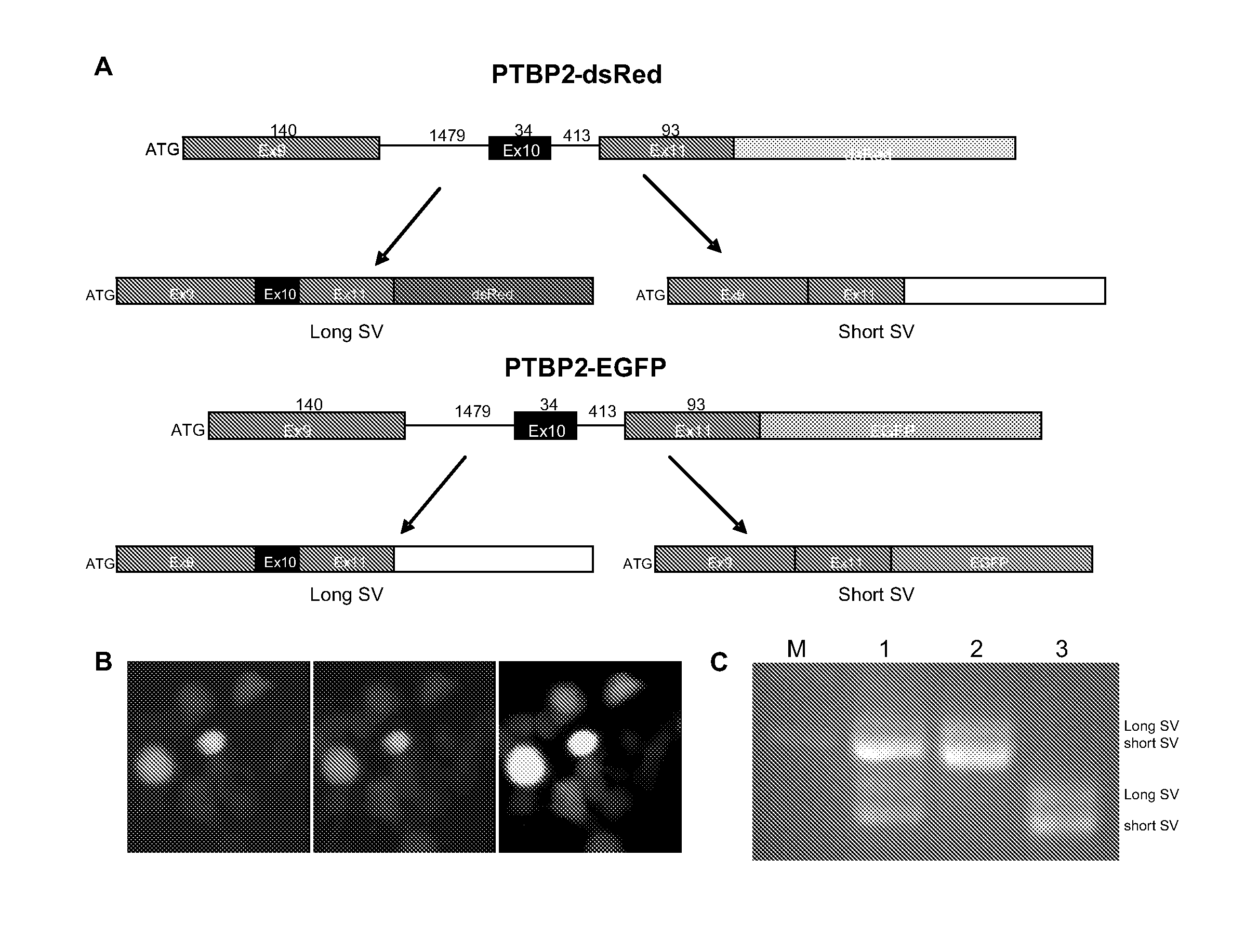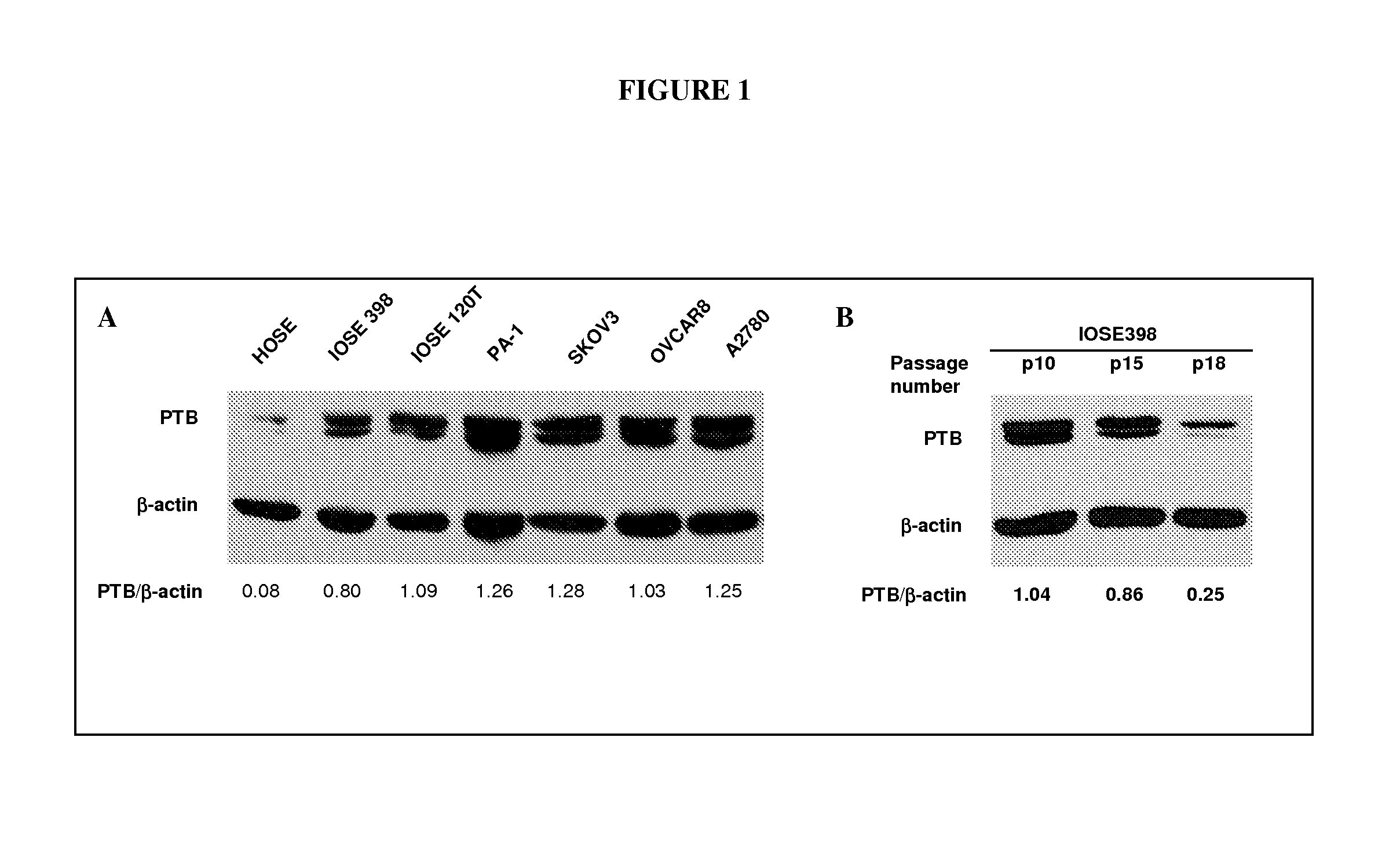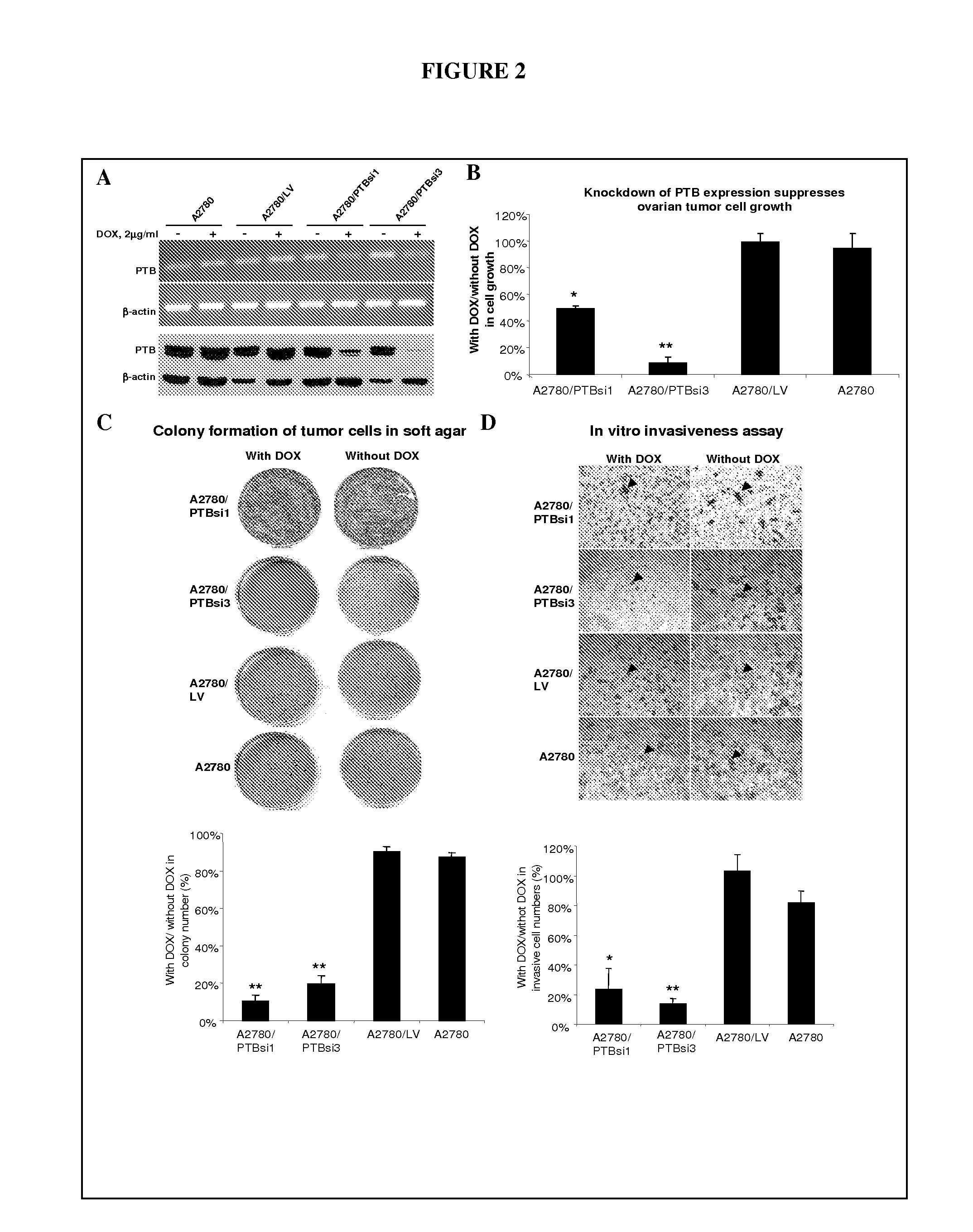Methods for Identifying Modulators of Pyrimidine Tract Binding Protein
a pyrimidine tract and binding protein technology, applied in the field of methods for identifying modulators of pyrimidine tract binding proteins, can solve problems such as human disease consequences, and achieve the effect of inhibiting or inducing ptb activity
- Summary
- Abstract
- Description
- Claims
- Application Information
AI Technical Summary
Benefits of technology
Problems solved by technology
Method used
Image
Examples
example 1
PTB Overexpression in Ovarian Tumors
[0086]Epithelial ovarian tumors overexpress PTB compared to their matched normal ovarian tissues. See PCT / U.S.07 / 07352, which is herein fully incorporated by reference. Based upon this finding, PTB expression in ovarian tumors with different malignancy and in invasive epithelial ovarian cancer (EOC) at different stages was evaluated. Two specialized tissue microarrays (TMAs), on (called Ovarian Disease Status TMA) containing benign ovarian tumors, borderline / low malignant potential (LMP) ovarian tumors as well as invasive EOC, and the other (called Ovarian Cancer Stage TMA) containing invasive EOC ranging from stage Ito stage IV disease, were evaluated by immunohistochemical staining for PTB. The result of average staining in the Ovarian Disease Status TMA is summarized in Table 3.
TABLE 3Table 1. Average PTB staining in the Ovarian Disease Status TMAOverall Expression †‡AllAllDisease StatusNegativeMixedPositiveTotalBenign 8 (47.1) 6 (35.3) 3 (17.6...
example 2
Immortalization of Ovarian Epithelial Cells Increases the Expression of PTB
[0089]Expression of PTB was examined via western blot in normal human ovarian surface epithelia (HOSE), life-extended HOSE (105E398, HOSE transduced by SV40 T-antigen), truly immortalized HOSE (IOSE120T, HOSE sequentially transduced by SV40 T-antigen and hTERT) and ovarian epithelial tumor cell lines PA-1, SKOV3, OVCAR8 and A2780. As shown in FIG. 1A, the expression of PTB is substantially overexpressed in life-extended IOSE398 cells and maintained at high levels in IOSE120T and ovarian tumor cell lines, compared to normal HOSE cells. Further, we compared the PTB levels at different passages of IOSE398 cells, which senesce at around passage 20. As can be seen in FIG. 1B, PTB levels were gradually reduced when cells were approaching senescence. The up-regulation of PTB may be an early event in the neoplastic transformation of ovarian epithelial cells and may be required for cell growth. FIG. 1A shows immunoblo...
example 3
Knockdown of PTB Suppresses Ovarian Tumor Cell Growth Both In Vitro and In Vivo
[0090]siRNA technology was .used to knock down the expression of PTB in tumor cells and to examine the effects of such manipulations on cell growth and malignant properties. Three siRNA (PTBsi1, PTBsi2, and PTBsi3) sequences targeting different regions of PTB mRNA were used. A siRNA can be generated as described in PCT / US2007 / 007352, which is herein fully incorporated by reference. Each of PTBsi1, PTBsi2, and PTBsi3 may be generated in a cell from a shRNA, which is formed after transcription of its coding sequence. The sequences of three pairs of oligonucleotides encoding for PTB shRNA1, shRNA2, and shRNA3 are shown in Table 3. The annealing of two oligonucleotides generates a DNA fragment with protruding ends compatible with Hind III and Bgl II restriction enzyme sites respectively. The coding sequences for each siRNA were cloned individually into a lentiviral vector downstream of H1 promoter and tetO el...
PUM
| Property | Measurement | Unit |
|---|---|---|
| linear time-course | aaaaa | aaaaa |
| fluorescence | aaaaa | aaaaa |
| fluorescent intensity | aaaaa | aaaaa |
Abstract
Description
Claims
Application Information
 Login to View More
Login to View More - R&D
- Intellectual Property
- Life Sciences
- Materials
- Tech Scout
- Unparalleled Data Quality
- Higher Quality Content
- 60% Fewer Hallucinations
Browse by: Latest US Patents, China's latest patents, Technical Efficacy Thesaurus, Application Domain, Technology Topic, Popular Technical Reports.
© 2025 PatSnap. All rights reserved.Legal|Privacy policy|Modern Slavery Act Transparency Statement|Sitemap|About US| Contact US: help@patsnap.com



